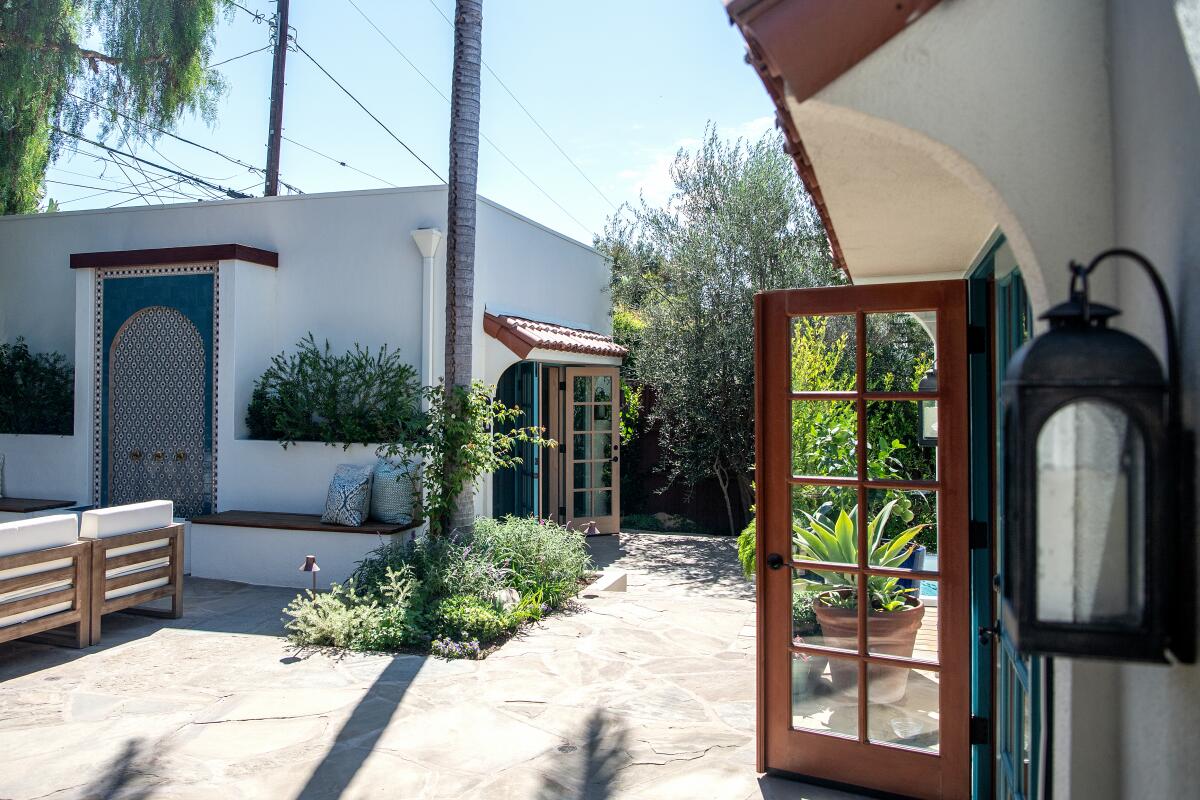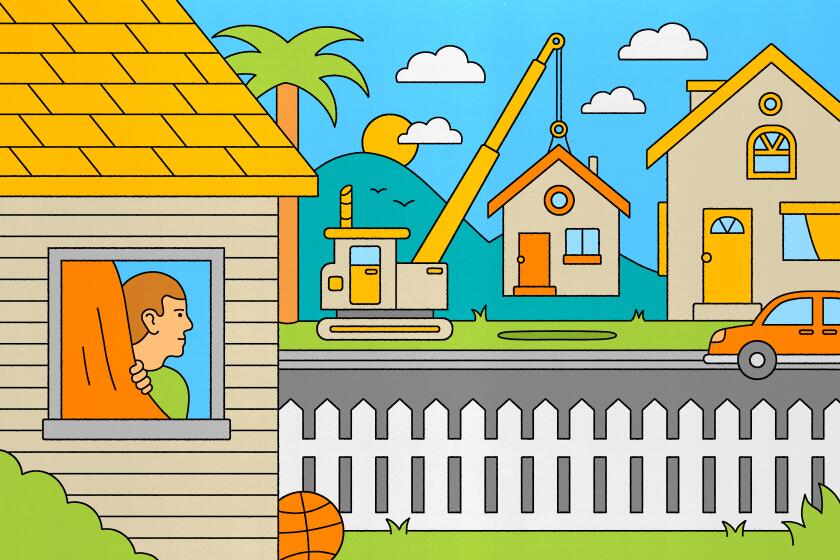Looking to finance an ADU? More help may be on the way

Hoping to increase the housing supply and help families build wealth, the Federal Housing Administration on Thursday proposed several changes to its guidelines that could make it easier to buy a house with an accessory dwelling unit or to build an ADU.
The agency’s proposal would allow lenders to offer renovation loans to build ADUs and consider future rent from the unit when calculating how much a customer can afford to borrow. Under current rules for FHA-backed loans, lenders can consider rental income from duplexes but not ADUs.
The proposal would address one of the main barriers that people with little home equity and low to moderate incomes encounter when they try to get a loan for an ADU. “This is a huge step in helping us actually build ADUs,” said Meredith Stowers, a loan officer at CrossCountry Mortgage in San Diego.
Other parts of the proposal would allow FHA-backed construction loans to be used to build a house and an ADU.
FHA Commissioner Julia R. Gordon said the agency is trying to advance two important goals with the proposal: enabling more people to own homes that include income-generating property, as the FHA does for duplexes, and increasing the housing supply.
The proposal is just a draft at this point, though, and it could change in response to public input.
Sign up for You Do ADU
Our six-week newsletter will help you make the right decision for you and your property.
You may occasionally receive promotional content from the Los Angeles Times.
The FHA doesn’t lend money directly; instead, it provides guarantees for loans issued by banks, which increase banks’ willingness to lend and reduces the interest rate charged. The guarantees are available only for loans that stay within the size limits set by the FHA. In Los Angeles County, the maximum for a one-unit property is just under $1.1 million. (The proposal would classify a single-family home with an ADU as a one-unit property.)
Under an FHA-backed renovation loan, homeowners can borrow more than the current value of their homes if the improvements they’re planning would justify it. But the FHA will back loans only if the monthly payments are deemed affordable, which means that they can’t push the borrower’s recurring obligations over a set percentage of the borrower’s income.
That’s why including future rents could make a big difference — increasing borrowers’ income makes it more likely that they’ll be able to borrow enough money to build an ADU, which can easily cost $150,000 to $200,000.
In contrast to the FHA’s proposal, Fannie Mae and Freddie Mac — two giant, federally chartered purchasers of home mortgages — do not support loans that factor in theoretical rental income from a yet-to-be-built ADU. The inability to consider potential rental income “is a massive obstacle in helping my clients obtain loans to build their ADUs,” Stowers said. Most of her clients are using home equity lines of credit to build ADUs, but the FHA’s proposal “would allow us to offer much lower-interest first mortgages” to finance the purchase of a home and the construction of an ADU.
“This is what the vast majority of Californians want,” she said. Many of her clients are families that combine the resources of multiple generations to build compounds consisting of two houses and two ADUs, she said. “Why wouldn’t you support that? These families are building a strong financial foundation, but also social ties that are invaluable.”
You’ll probably need some kind of loan to help pay for an ADU. Your options will depend on your income, your home equity and your current mortgage.
Gordon said the lack of historical data about ADUs and the value they add to a property has made them a challenge for the FHA, Fannie and Freddie. “It’s a little bit of a chicken-and-egg problem,” she said — there’s not enough data for lenders to figure out how to underwrite the projects, but without the loans, there’s no way to generate more data.
“To be honest, the easiest thing to do in that situation is always to do nothing.”
The FHA’s proposal seeks to support ADUs the way the agency has supported the construction and purchase of duplexes, but with some extra safeguards. For its rapid online loan evaluations, it would allow lenders to consider only 50% of the fair market rents a new ADU could generate — with duplexes, the limit is 75% — and those rents could constitute no more than 30% of the borrower’s total income when determining how large a loan to issue.
“This is new territory, and that’s why we’re putting this policy on the drafting table to receive public input,” Gordon said.
ADU construction has taken off in California, accounting for 15% of the housing units approved in the state in 2021. But this type of project is starting to be a national phenomenon, Gordon said, as more communities grapple with shortages of affordable housing and the need to increase density.
“It’s my sense that many jurisdictions find that permitting ADUs to be a more palatable political first step in making adjustments to zoning,” she said. “That’s why I do think we will start to see more interest.”
The first question to ask before deciding on an accessory dwelling unit is, ‘What am I trying to accomplish?’ Then check whether an ADU is the way to achieve that goal.
An ADU that can be rented out and appreciate in value over the years also creates a chance to build wealth from generation to generation.
“In a more modest neighborhood, the ability of a household to get into first-time homeownership of both the unit that they’ll be occupying and the unit that has a rental opportunity can be an excellent wealth-building opportunity,” Gordon said. “Many families over the years have successfully increased their own prosperity and really the stability and prosperity of the neighborhood in this way.”
Stowers praised the FHA for moving forward and recognized the agency’s concern about going too far too fast. But she added, “All the agencies have been tiptoeing toward this moment. But my hope is they will tiptoe a lot faster.”
About The Times Utility Journalism Team
This article is from The Times’ Utility Journalism Team. Our mission is to be essential to the lives of Southern Californians by publishing information that solves problems, answers questions and helps with decision making. We serve audiences in and around Los Angeles — including current Times subscribers and diverse communities that haven’t historically had their needs met by our coverage.
How can we be useful to you and your community? Email utility (at) latimes.com or one of our journalists: Jon Healey, Ada Tseng, Jessica Roy and Karen Garcia.
More to Read
Sign up for You Do ADU
Our six-week newsletter will help you make the right decision for you and your property.
You may occasionally receive promotional content from the Los Angeles Times.









